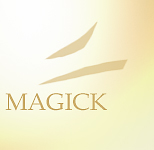
The Pagan Wheel Of The Year
- Samhain — October 31
- Yule — December 19-22
- Imbolc — February 1 or 2
- Ostara — March 19-22
- Beltaine — May 1
- Midsummer — June 19-21
- Lughnasadh — August 1
- Mabon — September 19-22



October 31. Pronounced “sow-en” (like the pig), not “sam hain.” The pagan new year, and the last harvest festival of the calendar year. Traditional foods include pumpkins, squash, and nuts. This is the time of year when pagans celebrate their ancestors and their heritage. Traditionally, an extra place is set and the food from that setting is put outside over night. Anything left in the morning is buried. This is also the time of year when the veil between the land of the living and the spirit world is thinnest, allowing communication with ancestors, necromancy, and the like. It is a good time for divination, notably a look at the year to come. In Wicca, the re-emergence of the goddess from the underworld is indicated, as in the story of Persephone, and we bid the god goodbye as we prepare for his Yule rebirth. Corresponds to the Eve of All Saints' Day on the Christian holiday calendar.
December 19-22, the exact time and date occurring when the sun passes into Capricorn. The time of greatest darkness and the longest night / shortest day of the year. The rebirth of the Wiccan god, signifying the re-emergence of the sun, as days will now begin to lengthen once more. There is a renewal of hope and optimism. In modern times Pagans often celebrate this holiday as Christians do Christmas, with feasting and gift-giving, Yule trees, decorations, and so forth. Corresponds to Christmas on the Christian holiday calendar.
February 1 or 2. The very earliest signs of spring and a celebration of the growing light. The Wiccan goddess is nurturing the young god. This is a time of new growth and regeneration. The planting of seeds is one way of celebrating. Creative tasks in general are positive points of focus. Corresponds to Candlemas on the Christian holiday calendar.
March 19-22, the exact time and date occurring when the sun passes into Aries. This is the first day of spring. The days and nights are now of equal length. The Wiccan god continues to mature and love is in the air… this is the time for many species of animal to breed, and even humans seem to be focused more in a romantic direction. New buds are appearing on the trees and flowers are blooming. Cut flowers decorate altars and feasts of in-season foods are appropriate. Corresponds to Easter on the Christian holiday calendar.
May 1. Spring is in full bloom. The Wiccan goddess and god are united in love. There is a focus on physical union in rites at this time, in often love-focused rituals. There are bonfires, and Maypoles, which are phallic symbols. As usual, seasonal foods are appropriate for feasting, as are cut flowers.
June 19-22, the exact time and date occurring when the sun passes into Cancer. The longest day and shortest night of the year. The Wiccan goddess and god are in the heat of their union. Herbs are harvested and young animals are growing. It's the time of year for travel, weddings and handfastings, social gatherings like barbeques, etc. Crops grow between the times of planting and harvest.
August 1. The First Harvest, of three. Many foods are being harvested: early grains, fruits, vegetables. There is a wide variety of choices for the sabbat feast, and canning begins. Young animals are growing strong. Our creative ventures begun in spring begin to bear fruit. Days are still long and yet they are waning; there is a lazy feeling in the evening air.
September 19-22, the exact time and date occurring when the sun passes into Libra. Once again the day and night are of the exact same length. This is the Second Harvest, the continuing harvest. More canning and preserving are done. The nights are cool and the leaves are turning, beginning to fall. We begin to prepare for the cold winter months ahead.